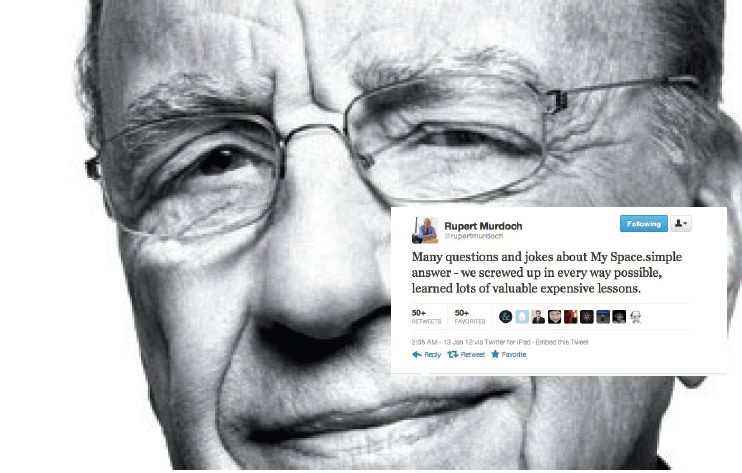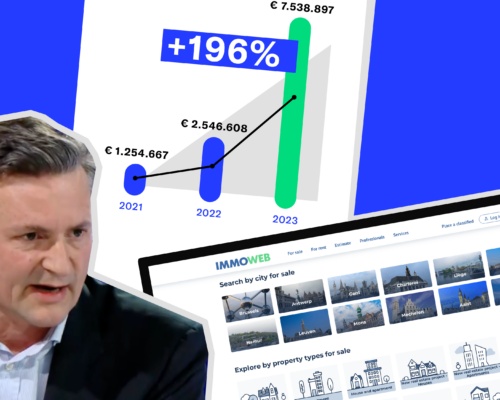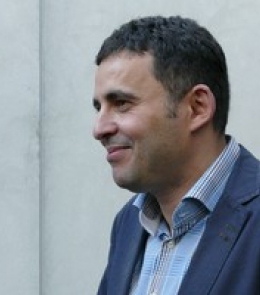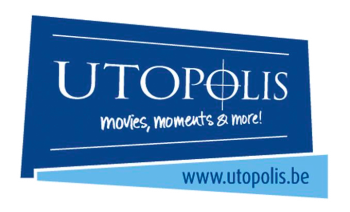What is the best strategy for CEO communication? When and how to leverage the CEO’s credibility in earned media and on social social? A look at research, examples and best practices for CEO communication strategy.
The CEO and reputation management
Let’s start with what CEOs expect from communication, and the role of the CEO in reputation management.
CEOs may not care much about the finer points of corporate communication, but they do see the reputation of the company as an important asset of the company, if not the most important. Here’s what came out of a qualitative study with 14 CEOs of major corporations:
CEOs believe it is they who own the management of reputation. All recognised that reputation is perhaps the most important single asset the company has, and many went on to say that they are simply the stewards of that reputation for the period they are in office.
CEOs believe that reputation is the single most important asset the company has
The reputation of the company is like a watch that has been in the family for generations: you just hold it for the next person in line, and you want to hand it over intact – or even increased in value. The link between reputation and value is not made lightly here: according to research, there is a strong link between market capitalization and reputation:
Reputation is credited with playing a major role in generating market capitalization for a company, and many argue that it should be treated as its most important long term asset
Further, the link between a CEO’s reputation and that of the company is very strong – dangerously so, if you ask CEOs:
CEOs recognised that there is a strong (and potentially dangerous link between the reputation of the organization and the person who heads it. One CEO went so far as to say that the reputation of the company and that of the CEO are one and the same thing.
All this is best summed up by Warren Buffett: “We can afford to lose money – even a lot of money. But we can’t afford to lose reputation – even a shred of reputation.” (Berkshire Hathaway letter to shareholders, 2010)
CEOs do care about how corporate communication affects the reputation of the company. CEOs feel that the role of the corporate communication professional is largely dependent on how well he or she can offer insights into the strategic implications of communication for the reputation of the organization.
It follows that managing the personal brand of the CEOis in no way a vanity project.
If you don’t manage the CEO brand, then stakeholders will project a brand anyway
Because if the company does not take steps to shape CEO reputation, stakeholders will spontaneously do it: “Stakeholders project a personal brand on the CEO in any event, and unless this is actively managed, a false and detrimental image can emerge. In some cases, the impact on personal and corporate reputation can be profound.” (3)
CEOs and media: winners and losers
To get an understanding how stakeholders see media, it’s useful to see how the media write about CEOs. Based on our own research and experience we can clearly see that: media look at the world through the wrong end of a binocular. They spend a lot of ink on a few clear “winners” and “losers”.
This is reflected in international research:
These results show that reporters choose to focus on a relatively small set of winners and losers when casting business coverage in terms of CEOs. The focus on a set of CEOs who become familiar helps fulfill an entertainment demand, since readers can develop expectations about the personalities and actions of particular individuals. (3)
You might conclude that your CEO is not such a “winner” (or doesn’t want to be). Or that your company is too small to run among giants. Should you give up on earned media? On the idea that your CEO could become a thought leader in your industry?
Not quite. There is no direct link between the size of a company and the status of the CEO in the media. Even things like the company’s revenue or the number of employees have little bearing on this.
It’s true that CEOs of publicly listed companies seem to be in the advantage. But “there are not a consistent set of characters that predict which companies will have CEOs treated as celebrity CEOs by major papers,” says the research by James Hamilton and Richard Zeckhauser.
Risks in CEO communication and media exposure
Before working on a plan to maximize CEO communication towards media, it’s useful to know there are certain risks involved in media exposure.
The goal of CEO communication is not to make the CEO famous. It can be dangerous for your CEO to fall in love with the cameras and flashligts. CEOs who become celebrities make more money. They may get more offers from other companies, resulting in higher costs for the organization when it has to replace the chief executive.
In some instances, say researchers, the pursuit of celebrity levels of coverage may come at the expense of shareholder interests, and may even be considered as “consumption”.
Meaning: it’s not a good idea if the CEO tries to become a media darling for reasons that have little to do with the strategic goals of the company.
A good example is Lee Iacocca, who became famous for the turnaround at Chrysler. In ‘Good to Great’ (Jim Collins), you can find this quote from the Wall Street Journal:
Mr. Iacocca headed the Statue of Liberty renovation, joined a congressional commission on budget reduction and wrote a second book. He began a syndicated newspaper column, bought an Italian villa where he started bottling his own wine and olive oil. Critics contend it all distracted him, and was a root cause of Chrysler’s current problems. Distracting or not, it’s clear that being a folk hero is a demanding sideline.
It goes even further. Research shows that CEOs who excessively court media by offering “soft news” about themselves (their horse stables, wine cellar, art collection,…) will more often end up tainted by scandal, offering their resignation or even being indicted.
A good example here might be Bernie Madoff with his art collection.
Striking the right balance in ceo communication
But keeping the CEO away from media is not a good idea either – it’s your job to ensure that the company’s CEO communication strikes the right balance between making your CEO accessible and not accessible.
Communication is a two way process. By opening yourself up (either on social media or in the media), you can get unfiltered input. Not only is this important to show and live values like transparency and empathy, it’s also a good experience for a CEO to be exposed to this straight talk.
Like it or not, CEOs are often surrounded by people who want to please them. Media and other stakeholders are less interested in sparing the CEOs feelings, and this may offer important insights about how the company is doing in the “real world”: “The CEO has an important role in the creation of a listening organization.” (7)
“The CEO has an important role in the creation of a listening organization.”
Our conclusion is that there’s a difference between a star communicator – someone who manages to strengthen the corporate reputation and strategy thanks to his excellent communications skills – and a celebrity, who’s in it for the pursuit of fame and attention.
In other words: “The modern day business leader must be like the samurai – able to master the martial arts of business combat, but also able to learn the skills of the poet or philosopher” (7).
“So what are the best practices for CEO communication?”
Steve Jobs is perhaps the CEO who understood PR best in recent history.
A few things Jobs understood very well, we think are: understanding that PR is mission critical, especially for a young company.
After receiving his first VC check, his first order of business was to sign up Regis McKenna, the legendary tech PR pro from Silicon Valley. Jobs understood that getting your image right the first time was important, but also that media love stories of young and bold entrepreneurs (they still do).
This observation prompts Al and Laura Ries to remark (in ‘The Rise of PR and the Fall of Advertising’) that Ben&Jerry’s would not be the hip icecream brand they are today without the founders Ben and Jerry themselves. The values of the brand are completely in sync with their own values. There is no downside in having them appear as the spokesperson of the brand.
Over the years, Jobs refined his understanding of PR, no doubt with the help of McKenna. He finetuned the product launches of Apple until it became an industry standard for CEOs to handle product launches in person (see, nowadays, Elon Musk and almost every tech CEO) and used the power of the Apple brand to “auction” exclusive interviews – write favorably about Apple and you might get a face to face with Jobs.
Another great example is Tony Hsieh, whose book ‘Delivering Happiness’ became so popular that Hsieh started a ‘Happiness’ bus tour around the US to share his vision on making customers happy. Hsieh was the CEO of Zappos, an online shoe retailer. Yet he didn’t choose to become a thought leader in shoes or retail. Rather, he grabbed a piece of territory that was a lot bigger: happiness. And here’s the strange thing: a CEO like Hsieh communicating about values (‘happiness’) and becoming a thought leader on corporate culture (geared towards making customers happy) had important ripple effects for his company Zappos.
With blog and social media, you are not dependent any more on traditional or mainstream media, who will sometimes stick to a message that is undesirable for your organization. At the time of the Leveson enquiry, Rupert Murdoch’s name became a byword for a complete lack of transparency and empathy – a distant power broker, wheeling and dealing with politicians in shady backrooms.
Going to the media was not an option for Murdoch, so he turned to Twitter, where his candor about business deals like MySpace generated media coverage that was at least neutral and sometimes even admiring in tone.
Also, by making himself accessible to the public, he shattered (or tried to shatter) the image of a shady, distant power broker in a private jet. Murdoch’s Twitter presence, I think, is a success because of the authentic voice. For many, there was also something inherently comical about a straight talking ‘old guy’ who ventured on Twitter. One of the first questions when he came on Twitter was: is it really him? – precisely because of the paradox: here’s the quintessential old media guy on Twitter.

Conclusions: when and how is CEO communication useful and effective?
Based on all this, gradually a picture emerges for CEO communication.
We think it becomes clear that CEO or founder communication has little downside as long as you’re still creating a brand and are hungry for publicity – any publicity, whether it be for the product, the company, the people behind the company or even the very market (if it’s a very new business model, like for instance the ‘sharing economy’ of Airbnb, or music streaming).
In the early days, the CEO is the brand
In the early days, as the CEO or founder, you essentially are the brand. The founder is, for a large part, the reason that investors and early employees and customers come on board, and the values of the company will almost necessarily be aligned with the personality of the executive team.
Things become a little bit different when you are Coca-Cola, General Electric or Arcelor Mittal.
In 1999, Douglas Ivester wrote a letter to the people of Belgium, apologizing for a food scare. Unfortunately, the communication didn’t entirely work out as expected, partly because Douglas Ivester was a fiftysomething who looked every inch the part of the American top executive. Here he was, writing a letter in the newspaper as a spokesperson of Coca-Cola.
One Belgian magazine started to poke fun at this fiftysomething stranger who suddenly started writing letters, by declaring Ivester their new “pen pal”, and addressing letters to him for months afterwards and once again a few years later, long after Ivester stepped down as CEO.
Highly paid executives of publicly listed companies are not ‘normal people’, and it’s a bit weird when a CEO who makes millions each year talks to us.
This effect of estrangement is validated in research:
Frontline employees are more effective than CEOs when communicating about topics related to customer experience
Stephens & Faranda, 1993
Also, from our own research we notice that executive compensation itself can become a toxic topic. It’s seldom a good idea for a highly compensated executive to talk about things like the struggles of people who can’t make ends meet.
These caveats are almost exclusively relevant, though, for executives with a very ‘financial’ profile at top publicly listed companies – think Fortune 500 companies.
When in doubt, go for the low hanging fruit
It would be wrong to conclude from all this that the CEO should remain invisible, however. Research shows that both employees of the company and the public are very eager to hear from the CEO what the company is planning and doing.
As one researcher writes: “most of the readers view the CEO as a corporate spokesperson representing company’s values and are eager to listen to the ‘master’s voice’.”
Most of the readers view the CEO as a corporate spokesperson representing the company’s values – and are eager to listen to the ‘master’s voice’
CEOs should be aware that they carry great weight on a couple of subjects, like human resources, corporate social responsibility (CSR), and anything related to public affairs, strategy and business.
These are the low hanging fruit: there is a low risk, but a big potential for thought leadership of the CEO – and in turn, for the company. It would show an overly risk averse attitude to avoid media contacts. You would be wasting opportunities this way.
Sources
- “CEO’s views on reputation management,” Journal of Communication Management, vol. 9
- “Media coverage of CEO’s: Who, What, Where, When?”, James Hamilton (Duke) and Richard Zeckhauser (Harvard)
- “Satisfaction, corporate credibility, CEO reputation and leadership effects on public relationships”, Journal of Targeting, Measurement and Analysis for Marketing (2011) 19
- “How journalists choose experts,” Kristien Vermoesen
- ‘Good to Great’, Jim Collins
- “Managing corporate communications”, Rosella Gambetti (Ed.)
- “6 PR Lessons of Steve Jobs”, Kristien Vermoesen and Raf Weverbergh
- “The fall of advertising and the rise of PR”, Al & Laura Ries






























































































